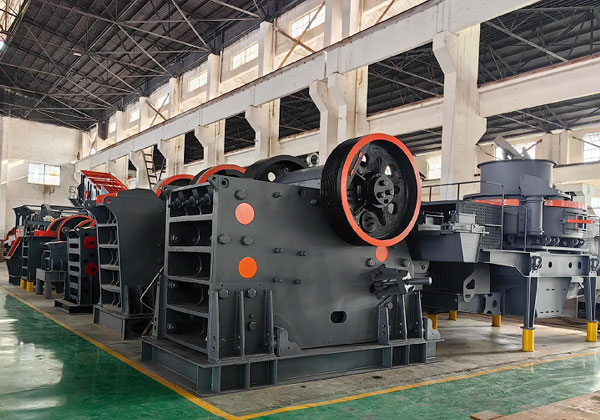Crushing equipment plays a crucial role in the mining industry, enabling efficient size reduction of raw materials. Among the various machines available, jaw crushers stand out as foundational primary crushers, while other types—such as hammer crushers, cone crushers, and mobile crushing stations—offer specialized advantages. This analysis explores the features, applications, and benefits of these crushing machines.
1. Jaw Crusher
Jaw crushers are commonly used as primary crushers in mining and aggregate production. They operate by compressing materials between a fixed and moving jaw plate, making them ideal for hard and abrasive materials.
Key Advantages
- Robust Construction: Designed to handle heavy-duty operations with high durability.
- Versatility: Suitable for a wide range of materials, including granite, basalt, and iron ore.
- Simple Maintenance: Easily accessible components reduce downtime for servicing.
Applications
- Primary crushing stage in mining and quarrying.
- Suitable for stationary and mobile installations.

2. Hammer Crusher
Specifically designed for coal crushing, hammer crushers use high-speed rotating hammers to crush materials via impact forces.
Key Advantages
- High Efficiency: Impact-based crushing ensures superior material breakdown.
- Durable Wear Parts: Hammer heads are made from wear-resistant alloys, reducing replacement frequency.
- Dust Control: Improved sealing minimizes dust emissions during operation.
Applications
- Coal preparation plants.
- Secondary crushing where fine granularity is required.
3. Cone Crusher (HPT Multi-Cylinder Hydraulic Cone Crusher)
Cone crushers are advanced secondary or tertiary crushers capable of producing finely crushed materials. The HPT hydraulic version enhances performance through automation and efficient operation.
Key Advantages
- Higher Capacity: Optimized design increases throughput by 35–60% compared to traditional models.
- Automated Hydraulic System: Ensures stable operation and quick adjustments.
- Better Particle Shape: Produces uniform-sized aggregates suitable for high-grade applications.
Applications
- Metal and non-metal mining (e.g., iron ore, limestone).
- High-grade aggregate production for construction.
4. Mobile Crushing Station
Mobile crushing stations integrate crushing and screening units into a single chassis, providing unparalleled flexibility.
Key Advantages
- Portability: Moves easily between sites (tire or track-mounted options).
- Cost-Efficient: Eliminates transport costs by processing materials on-site.
- Eco-Friendly: Designed to minimize noise and dust pollution.
Applications
- Short-term mining projects.
- Urban construction waste recycling.
Comparative Analysis
| Equipment Type | Best Suited For | Key Strength | Limitations |
|---|---|---|---|
| Jaw Crusher | Primary crushing | High durability, simplicity | Limited fine output |
| Hammer Crusher | Coal/secondary crushing | High impact efficiency | Not ideal for hard rock |
| Cone Crusher | Secondary/tertiary crushing | Superior particle shape | Higher maintenance complexity |
| Mobile Crusher | On-site processing | Flexibility & mobility | Smaller capacity vs stationary |
Choosing the right crushing equipment depends on material hardness, production requirements, and operational flexibility. Jaw crushers remain essential for primary crushing, while cone and hammer crushers excel in secondary roles. Mobile stations offer unmatched adaptability for dynamic mining sites. Future advancements are likely to focus on automation, energy efficiency, and eco-friendly designs to meet stringent industry demands.
